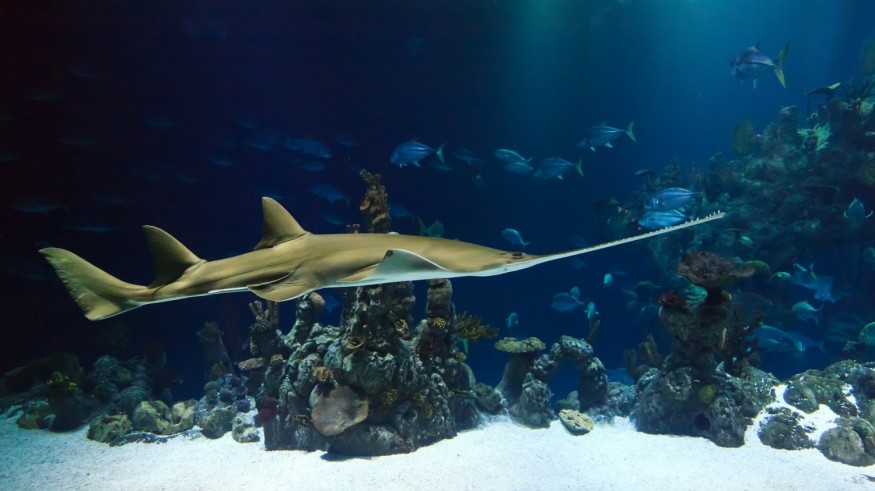Sawfish are large rays with sharp, chainsaw-like extensions of the nose, called rostrums, that they use in murky waters to find and stun prey. Of all sharks and rays, they are the most vulnerable and, by certain standards, of all marine fish species.
Despite having once covered the tropical and subtropical seas of the Atlantic, Indian, and Pacific Oceans in vast numbers, all five sawfish species are threatened with extinction.
Related Article: Shark Population Down by 71%, Leading to a Possible Extinction
Sawfish
Sawfish, a group of flattened marine fish that comprises rays and skates, are part of the Rajiformes order and are closely related to sharks.

Sawfish may repair their teeth if they are worn out or damaged, like many toothed fish. This phenomenon is called polyphyodonty.
Armed with a giant saw blade, they are prone to entangling in fishing gears in the shallow coastal waters, estuaries, and river beds where they breed, as well as in deeper waters where they feed and are very slow to rebound from any population loss, as they are slow-growing fish.
In 19 countries, they are protected by law. Their commercial trading is forbidden under the Convention on International Trade in Endangered Species (CITES), a treaty governing cross-border wildlife trade. Their depletion will destabilize a coastal ecosystem as a top predator in the food chain.
Critically Endangered
Two key reasons for the decline of sawfish populations have been identified: people cathing them in various commercial and recreational fisheries, along with loss of habitat and erosion.

Due to over-exploitation of fisheries (directed and bycatch) and habitat destruction, all five sawfish species' global stocks have suffered historical declines of more than 90 percent.
As a result, three species are listed as Critically Endangered on the IUCN Red List, and two species are listed as Endangered. Without immediate conservation measures, there is a genuine possibility that these rare animals will be endangered.
These threats have declined significantly since the U.S. sawfish population was listed as endangered in 2003. (some of the actions already existed before 2003). For more than a decade, there has been a ban on inshore fishing nets in Florida waters, and there are bans and penalties against catching, damaging, or harassing sawfish intentionally).
Despite the efforts to preserve their species, sawfish find it hard to rebound as they are a relatively slow growing species.
Conservation Efforts
At present, the key purpose of sawfish research is to track the population of sawfish to determine if the population is rebounding or at least stabilizing to assess the efficacy of protective measures.
This tracking information will provide us with valuable data on the species' ecology, reproduction, and life history, which will enable us to assist with conservation efforts to preserve small-tooth sawfish more effectively. This surveillance service must continue long into the future as, due to its life history attributes, the recovery of this species will take some time.
A Global Sawfish Survival Plan was established by the IUCN Shark Specialist Community in 2014, including a report on sawfish's status. It also outlines nationally prioritized guidelines for concrete intervention in research, education and restoration, and a plan for implementing regional conservation projects to enhance the global status of sawfish.
For the latest news about the animal kingdom, don't forget to follow Nature World News!
© 2025 NatureWorldNews.com All rights reserved. Do not reproduce without permission.





